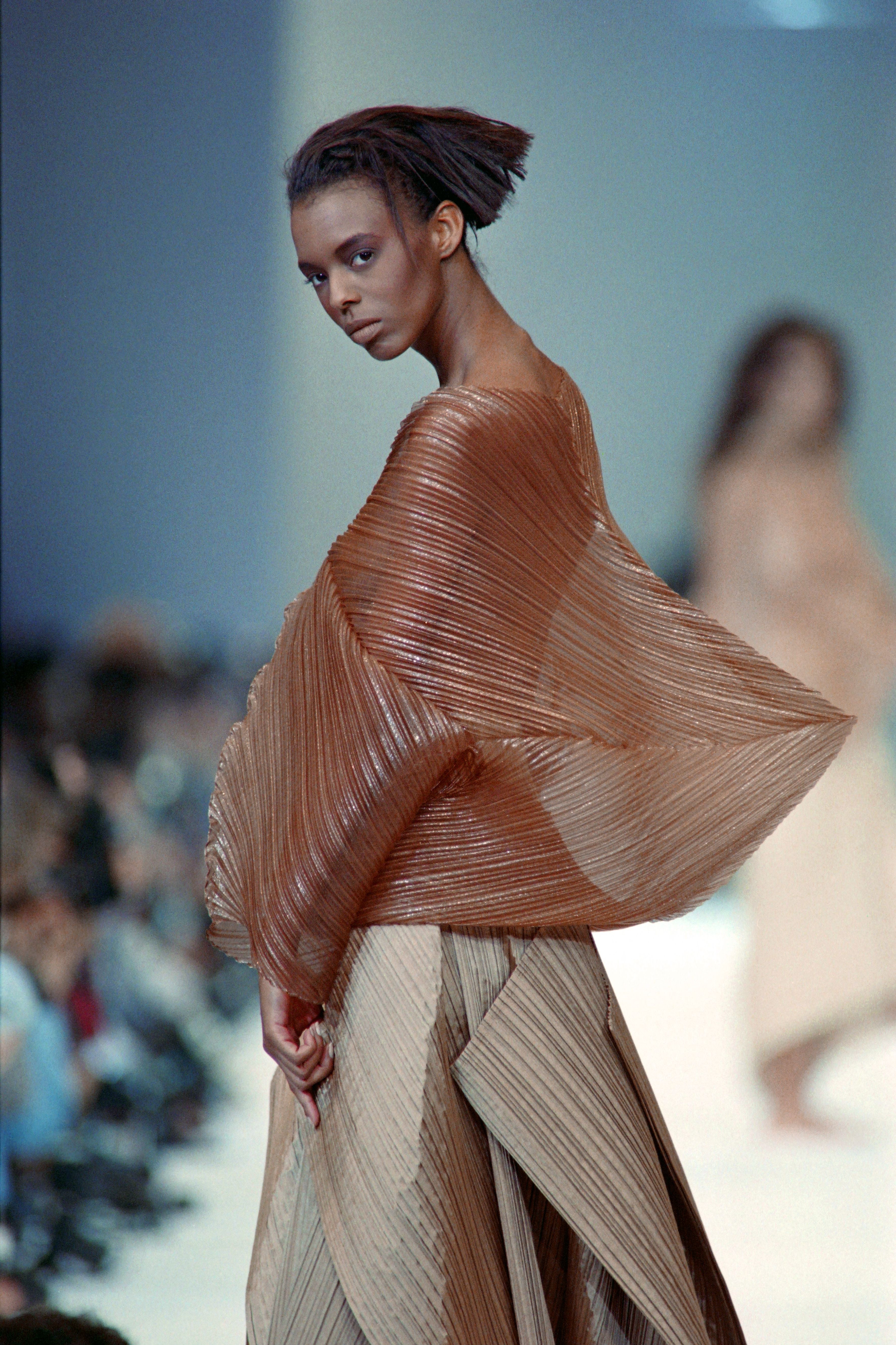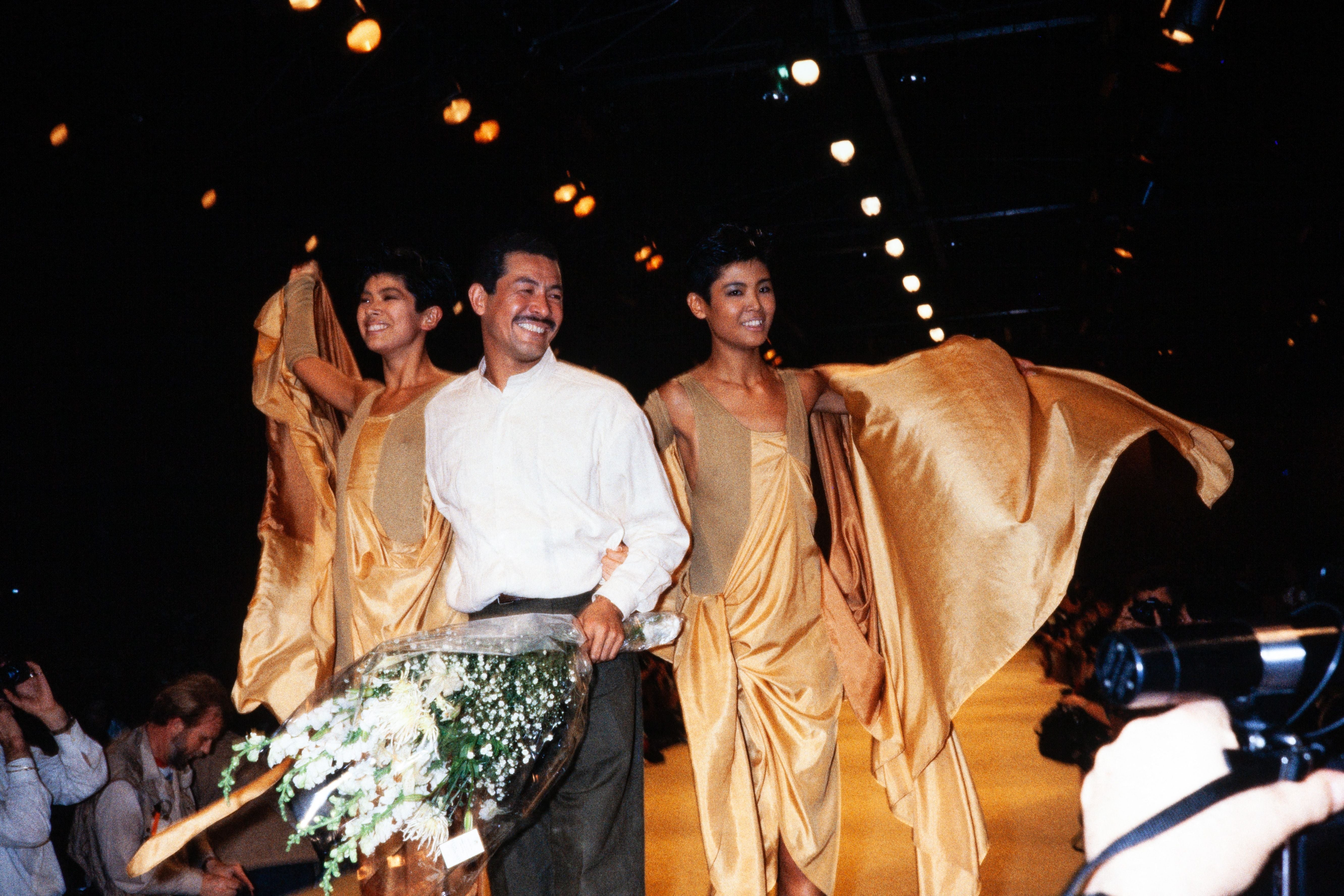Issey Miyake: The life and legacy of the King of Pleats
The innovative Japanese designer has died aged 84

Issey Miyake, the innovative Japanese fashion designer behind Steve Jobs’ signature black turtleneck has died, aged 84.
Miyake passed away from liver cancer on 5 August at a hospital in Tokyo. He was surrounded by close friends and associates, according to a statement from the Miyake Design Studio and the Issey Miyake Group, as per WWD. The trailblazer, famed for his practical designs and best-selling fragrances, wished for no funeral or memorial service.
“Never one to embrace trends, Miyake’s dynamic spirit was driven by a relentless curiosity and desire to convey joy through the medium of design,” the Japanese fashion house said. “Always a pioneer, Miyake both embraced traditional handcrafts but also looked to the next solution: the newest technology driven by research and development.
“He never once stepped back from his love, the process of making things. He continued to work with his teams, creating new designs and supervising all collections under the various Issey Miyake labels. His spirit of joy, empowerment and beauty will be carried on by the next generations.”

Born in Hiroshima, Japan in 1938 – he was seven years old when he survived the US atomic bomb drop in 1945 – Miyake dreamed of becoming a dancer but soon took an interest in fashion design after reading his sister’s magazines. He would go on to study graphic design at the Tama Art university in Tokyo and later enrolled in the Chambre Syndicale De La Couture Parisienne school in Paris, where he was an apprentice to Guy Laroche. He also worked with Hubert de Givenchy drawing up to 100 sketches every day. In 1969, he spent a year in New York City where he took English classes at Columbia University and produced sketches for Geoffrey Beene.
Miyake returned to Japan in 1970. As a university student he had entered a competition at Tokyo’s Bunka Fashion College but lost due to his lack of patternmaking and sewing skills. Now he was back to open his own high-end women’s brand, Miyake Design Studio.
Miyake leaves behind a powerful legacy. In 1976, he hosted a runway show, “Issey Miyake and Twelve Black Girls in Tokyo”, which put Black women front and centre. Over the course of a month, 12 models from across the world (including Grace Jones and Toukie Smith) walked in his avant-garde designs, which fused bold silhouettes with practical materials.
He was an innovator and said he wanted to make “fundamental changes to the system of making clothes”. In the 1980s, he created a series of “Body” collections of sculptural pieces, made from hard materials that had not previously been used in clothing such as rattan and plastic.

But arguably his biggest feat is Pleats, Please, a line of products made from his unique, patented pleating technique. Traditionally, fabric was pleated and then cut to design. Miyake developed a method which cut and sewed the fabric first, before sandwiching it between layers of paper and feeding into a heat press to be pleated. The result was functional wrinkle-proof designs and pleats that could maintain their shape even after being folded.
While Miyake did not pursue his childhood ambitions in dance, he tested his novel pleats by creating a set of costumes for “The Loss of Small Detail”, a ballet performance choreographed by William Forsythe. The pleated designs, in shades of white, black and silver, retained their form throughout the performance, but also created organic shapes as the dancers moved.

Aside from his patented pleats, one of Miyake’s most famous works is the black turtleneck which became syonymous with Apple co-founder Steve Jobs before his death. Miyake and Jobs first met in the 1980s, and initally intended to design a uniform for all Apple employees. But when his staff “hated” the idea, Jobs turned to Miyake to create a uniform for himself instead. The design was retired from Issey Miyake’s production in 2011 following Jobs’ death.
News of Miyake’s passing has rocked the fashion industry and tributes to the “King of Pleats” have begun pouring in from editors, designers and fans. American designer Norma Kamali described him as a “unique authentic talent” who “raised the barre of skills needed to be a global designer”. Federico Salto, fashion news editor of Vogue Italia, said Miyake was “one of the few who how to combine creativity with pure sense of reality.”
Join our commenting forum
Join thought-provoking conversations, follow other Independent readers and see their replies
Comments



Bookmark popover
Removed from bookmarks